 |
| April 09, 2024 | Volume 20 Issue 14 |
Designfax weekly eMagazine
Archives
Partners
Manufacturing Center
Product Spotlight
Modern Applications News
Metalworking Ideas For
Today's Job Shops
Tooling and Production
Strategies for large
metalworking plants
Largest digital camera ever aims to unlock dark mysteries of the universe
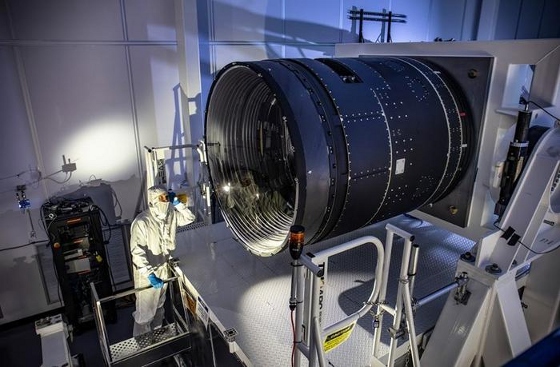
LSST Camera Deputy Project Manager Travis Lange shines a flashlight into the LSST Camera, a massive digital camera the size of a small car. [Credit: Image courtesy of Jacqueline Ramseyer Orrell/SLAC National Accelerator Laboratory]
After two decades of work, scientists and engineers at the Department of Energy's SLAC National Accelerator Laboratory and their collaborators are celebrating the completion of the Legacy Survey of Space and Time (LSST) Camera.
As the heart of the DOE- and National Science Foundation-funded Vera C. Rubin Observatory, the 3,200-megapixel camera (that's 3.2 billion pixels) will help researchers observe our universe in unprecedented detail. Over 10 years, it will generate an enormous trove of data on the southern night sky that researchers will mine for new insights into the universe. That data will aid in the quest to understand dark energy, which is driving the accelerating expansion of the universe, and the hunt for dark matter, the mysterious substance that makes up around 85% of the matter in the universe. Researchers also have plans to use Rubin data to better understand the changing night sky, the Milky Way galaxy, and our own solar system.
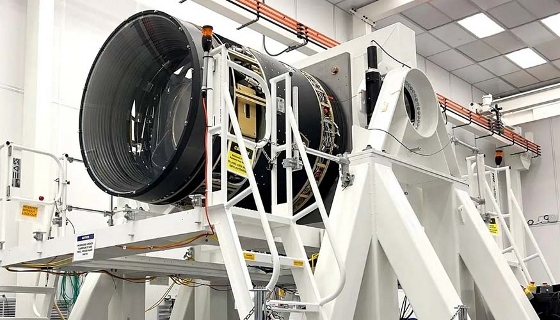
Front view of the fully assembled LSST Camera in its integration stand at SLAC National Laboratory. The LSST Camera will be part of the Vera C. Rubin Observatory under construction in northern Chile. [Credit: Photo courtesy of SLAC National Laboratory]
"With the completion of the unique LSST Camera at SLAC and its imminent integration with the rest of Rubin Observatory systems in Chile, we will soon start producing the greatest movie of all time and the most informative map of the night sky ever assembled," said Director of Rubin Observatory Construction and University of Washington professor Zeljko Ivezic.
To achieve that goal, the SLAC team and its partners built the largest digital camera ever constructed for astronomy. The camera is roughly the size of a small car and weighs around 3,000 kg (3 metric tons), and its front lens is over 5 ft across -- the largest lens ever made for this purpose.
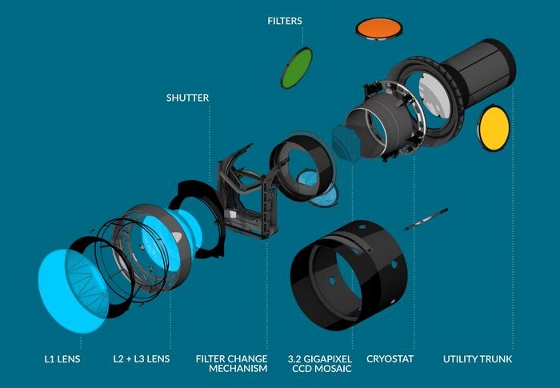
An artist's rendering of the LSST Camera showing its major components including lenses, sensor array, and utility trunk. [Credit: Chris Smith/SLAC National Accelerator Laboratory]
Another 3-ft-wide lens had to be specially designed to maintain shape and optical clarity while also sealing the vacuum chamber that houses the camera's enormous focal plane. That focal plane is made up of 189 individual custom-designed charge-coupled devices (CCD) sensors, and it is so flat that it varies by no more than a tenth the width of a human hair. The pixels themselves are only 10 microns wide.
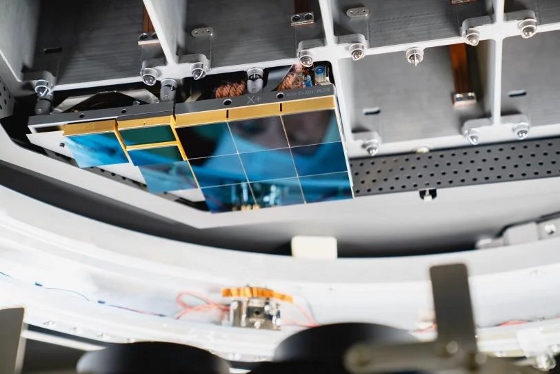
Individual imaging sensors and supporting electronics of the LSST Camera's focal plane are packaged into units, called "rafts." There are two different types of units: 21 square rafts (center), each containing nine sensors, will produce the images for Rubin Observatory's science program. An additional four specialty rafts (left) with only three sensors each will be used for camera focusing and synchronizing the telescope with Earth's rotation. [Credit: Farrin Abbott/SLAC National Accelerator Laboratory]
Sets of nine CCDs and their supporting electronics were assembled into square units, called "science rafts," at DOE's Brookhaven National Laboratory and shipped to SLAC. There, the camera team inserted 21 of them (for a total of 189 CCDs), plus an additional four specialty rafts not used for imaging, into a grid that holds them in place.
VIDEO: LSST camera assembly time lapse. [Credit: SLAC National Accelerator Laboratory]
According to a SLAC update in 2020, "The team members spent a year preparing for the raft installation by installing numerous 'practice' rafts that did not go into the final focal plane. That allowed them to perfect the procedure of pulling each of the 2-ft-tall, 20-lb rafts into the grid using a specialized gantry developed by SLAC's Travis Lange, lead mechanical engineer on the raft installation. "
The camera's most important feature is its resolution, which is so high it would take hundreds of ultra-high-definition TVs to display just one of its images at full size, said SLAC professor and Rubin Observatory Deputy Director and Camera Program Lead Aaron Roodman. "Its images are so detailed that it could resolve a golf ball from around 15 miles away, while covering a swath of the sky seven times wider than the full moon. These images with billions of stars and galaxies will help unlock the secrets of the universe."
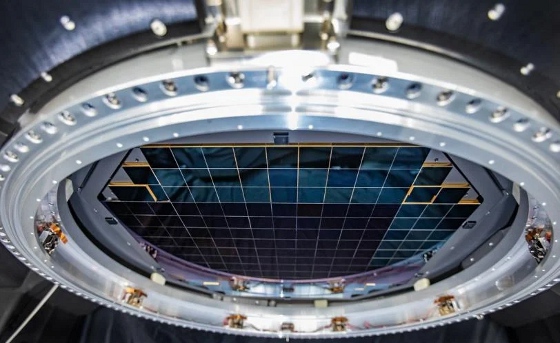
The complete focal plane of the LSST Camera is more than 2 ft wide and contains 189 main individual sensors or charge-coupled devices (CCDs) that will produce 3,200-megapixel images. [Credit: Jacqueline Orrell/SLAC National Accelerator Laboratory]
And those secrets are increasingly important to reveal, said Kathy Turner, program manager for the DOE's Cosmic Frontier Program. "More than ever before, expanding our understanding of fundamental physics requires looking farther out into the universe," Turner said. "With the LSST Camera at its core, Rubin Observatory will delve deeper than ever before into the cosmos and help answer some of the hardest, most important questions in physics today."
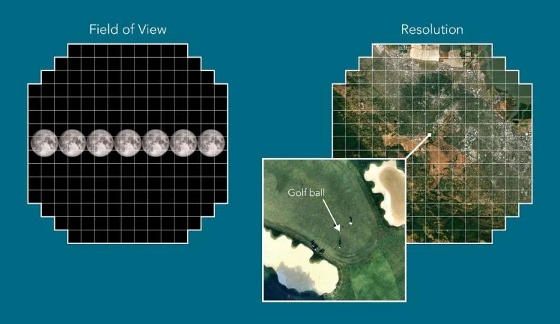
The LSST Camera's focal plane has a surface area large enough to capture a portion of the sky about the size of 7 full moons. Its resolution is so high that you could spot a golf ball from 15 miles away. [Credit: Greg Stewart/SLAC National Accelerator Laboratory]
Now that the LSST Camera is complete and has been thoroughly tested at SLAC, it will be packed up and shipped to Chile and driven up 8,900-ft-high Cerro Pachon in the Andes, where it will be hoisted atop the Simonyi Survey Telescope later this year.
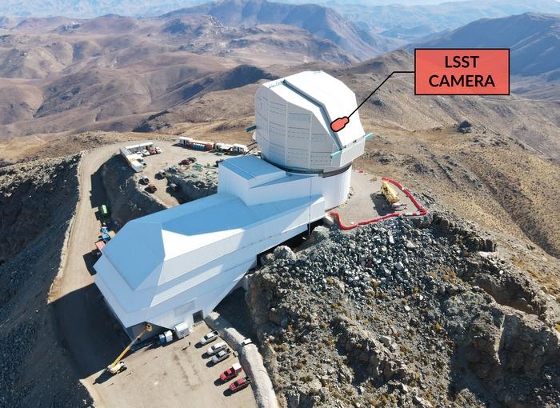
The camera will sit atop Rubin Observatory's Simonyi Survey Telescope high in the Andes mountains of Chile. [Credit: Rubin Observatory/National Science Foundation/AURA]
Once it's up and running, the camera's essential purpose is to map the positions and measure the brightness of a vast number of night-sky objects. From that catalog, researchers can infer a wealth of information. Perhaps most notably, the LSST Camera will look for signs of weak gravitational lensing, in which massive galaxies subtly bend the paths light from background galaxies takes to reach us. Weak lensing reveals something about the distribution of mass in the universe and how that's changed over time, which will help cosmologists understand how dark energy is driving the expansion of the universe.
The observatory is the first built for studying weak lensing on this scale, and the project led scientists and engineers to develop a number of new technologies, including new kinds of CCD sensors and some of the largest lenses ever made -- and make sure all of those components worked well together, said Martin Nordby, a senior staff engineer at SLAC and the LSST camera project manager.
Scientists also want to study patterns in the distribution of galaxies and how those have changed over time, identifying clusters of dark matter and spotting supernovae, all of which can help further understanding of dark matter and dark energy alike.
What else do you do with a camera this big?
The same images that reveal details of distant galaxies will help researchers study something closer to home: our own Milky Way galaxy. Many of its stars are small and faint, but with the LSST Camera's sensitivity, researchers expect to produce a far more detailed map of our galaxy, yielding insights into its structure and evolution as well as the nature of stars and other objects within it.
Even closer to home, researchers are hoping to create a far more thorough census of the many small objects in our solar system. According to Rubin Observatory estimates, the project may increase the number of known objects by a factor of 10, which could lead to a new understanding of how our solar system formed and perhaps help identify threats from asteroids that get a little too close to the planet.
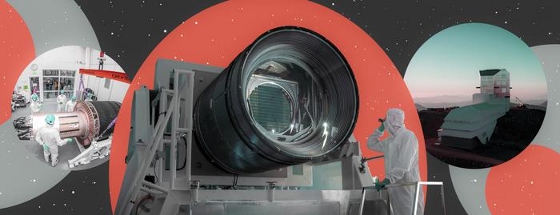
Researchers examine the LSST Camera. The camera will soon be shipped to Chile, where it will be the heart of the Vera C. Rubin Observatory (right). [Credit: Greg Stewart/SLAC National Accelerator Laboratory]
Finally, Rubin scientists will look at how the night sky is changing -- for example, how stars die or how matter falls into supermassive black holes at the centers of galaxies.
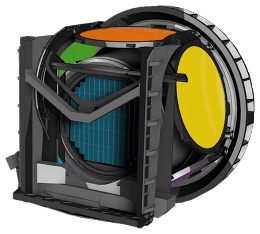
LSST filter changing device. [Credit: SLAC National Accelerator Laboratory]
Among the partner labs that contributed expertise and technology are Brookhaven National Laboratory, which built the camera's digital sensor array; Lawrence Livermore National Laboratory, which with its industrial partners designed and built lenses for the camera; and the National Institute of Nuclear and Particle Physics at the National Center for Scientific Research (IN2P3/CNRS) in France, which contributed to sensor and electronics design and built the camera's filter exchange system, which will allow the camera to home in on six separate bands of light from the ultraviolet to infrared. Some of the researchers at Brookhaven Lab have been working on the project for more than 20 years.
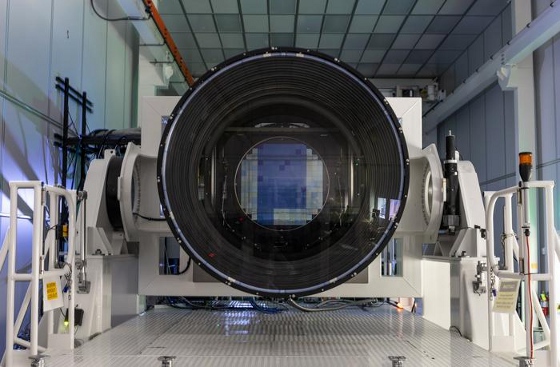
A front view of the completed LSST Camera, showing the 3,200-megapixel focal plane within. [Credit: Jacqueline Ramseyer Orrell/SLAC National Accelerator Laboratory]
Key features of the camera's optical assemblies are its three lenses, one of which at 1.57 m (5.1 ft) in diameter is believed to be the world's largest high-performance optical lens ever fabricated.
IN2P3/CNRS camera scientist Pierre Antilogus said, "To make a 3D movie of the universe, the camera had to take an image in about 2 seconds and change filters in less than 90 seconds. This is quite a feat for a camera of this size. And if the size of the LSST Camera's focal plane is unique, the density of the technology inside is even more impressive. By being in charge of the filter exchange system and contributing to the focal plane, our team is delighted to have taken part in this collective adventure to develop such a powerful camera."
EDITOR'S NOTE: All of these sensors and electronics really heat things up in the LSST Camera, so it also has a customized refrigeration system to keep it cool. You can read about that on the energy.gov site here.
Sources: DOE, SLAC National Accelerator Laboratory, Stanford University
Published April 2024
Rate this article
View our terms of use and privacy policy
